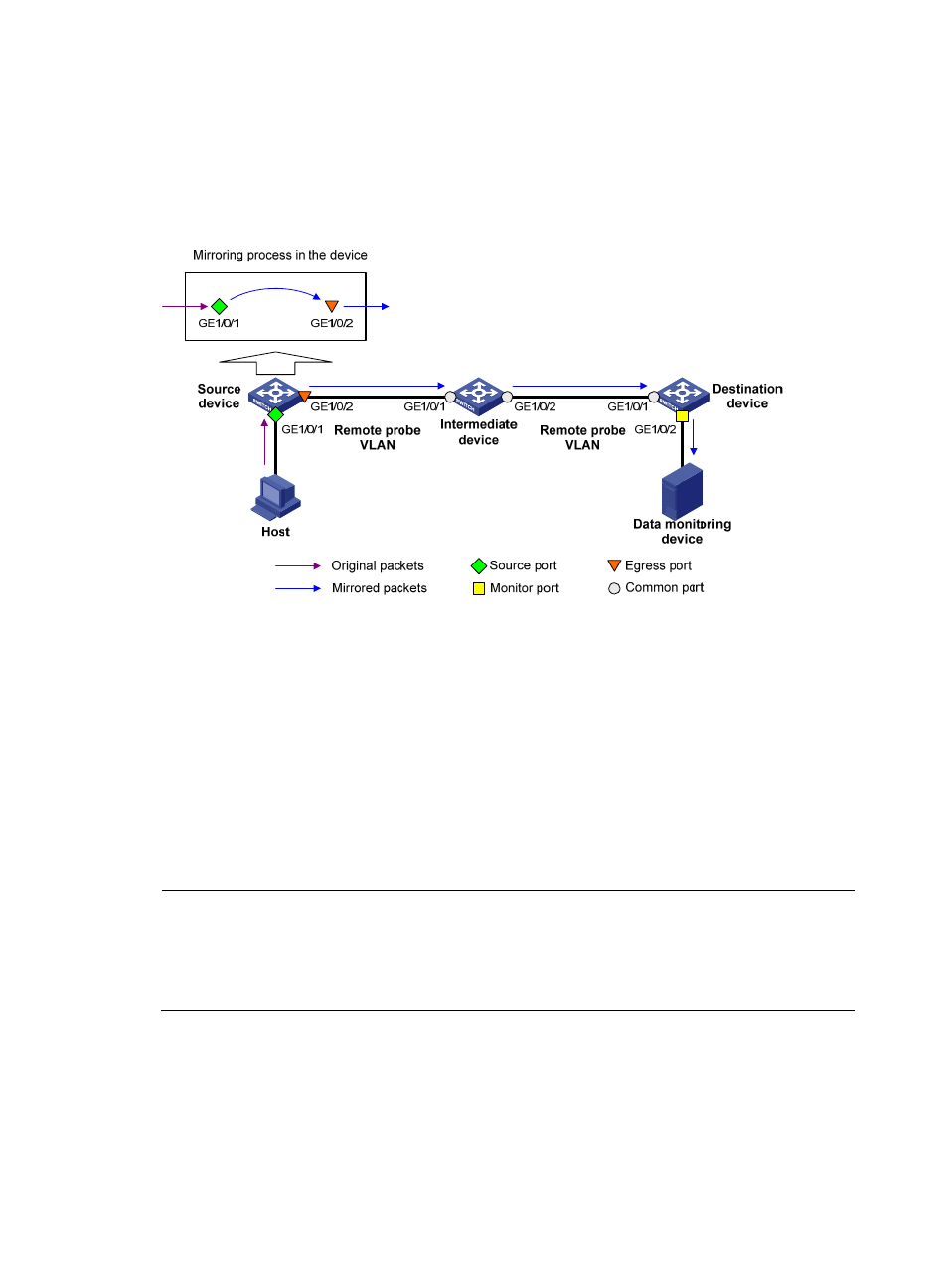Configuring local port mirroring – H3C Technologies H3C WX5500E Series Access Controllers User Manual
Page 89

81
The source device copies packets received on the source port to the egress port. The egress port forwards
the packets to the intermediate devices, which then broadcast the packets in the remote probe VLAN and
transmit the packets to the destination device. When it receives the mirrored packets, the destination
device checks whether their VLAN IDs are the same as the remote probe VLAN ID. If yes, the device
forwards the packets to the data monitoring device through the monitor port.
Figure 32 Layer 2 remote port mirroring implementation
When you configure Layer 2 remote mirroring, follow these guidelines:
•
To make sure that the source device and the destination device can communicate at Layer 2 through
the remote probe VLAN, assign the intermediate devices’ ports on the way between the source and
destination devices to the remote probe VLAN.
•
For a mirrored packet to successfully arrive at the remote destination device, make sure the VLAN
ID of the mirrored packet is not removed or changed. Otherwise, the Layer 2 remote port mirroring
configuration will fail.
•
To monitor both the received and sent packets of a port in a mirroring group, you must use the
mac-address mac-learning disable command on the source, intermediate, and destination devices
to disable MAC address learning of the remote probe VLAN. For more information about the
mac-address mac-learning disable command, see Layer 2—LAN Switch Command Reference.
NOTE:
Both Layer 2 and Layer 3 Ethernet interfaces support the port mirroring function. The term "interface" in
this chapter collectively refers to these two types of interfaces. You can use the port link-mode command
to configure an Ethernet port as a Layer 2 or Layer 3 interface (see
Layer 2—LAN Switching Configuration
Guide).
Configuring local port mirroring
This section describes the local port mirroring configuration procedures.
